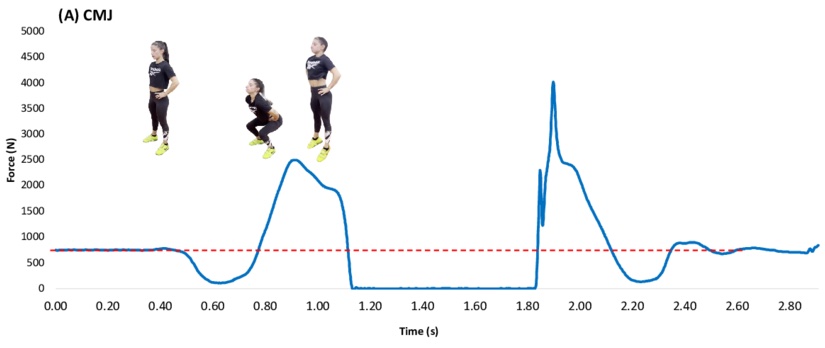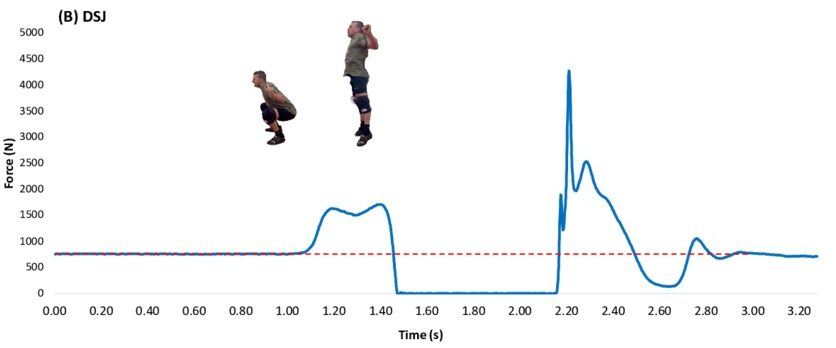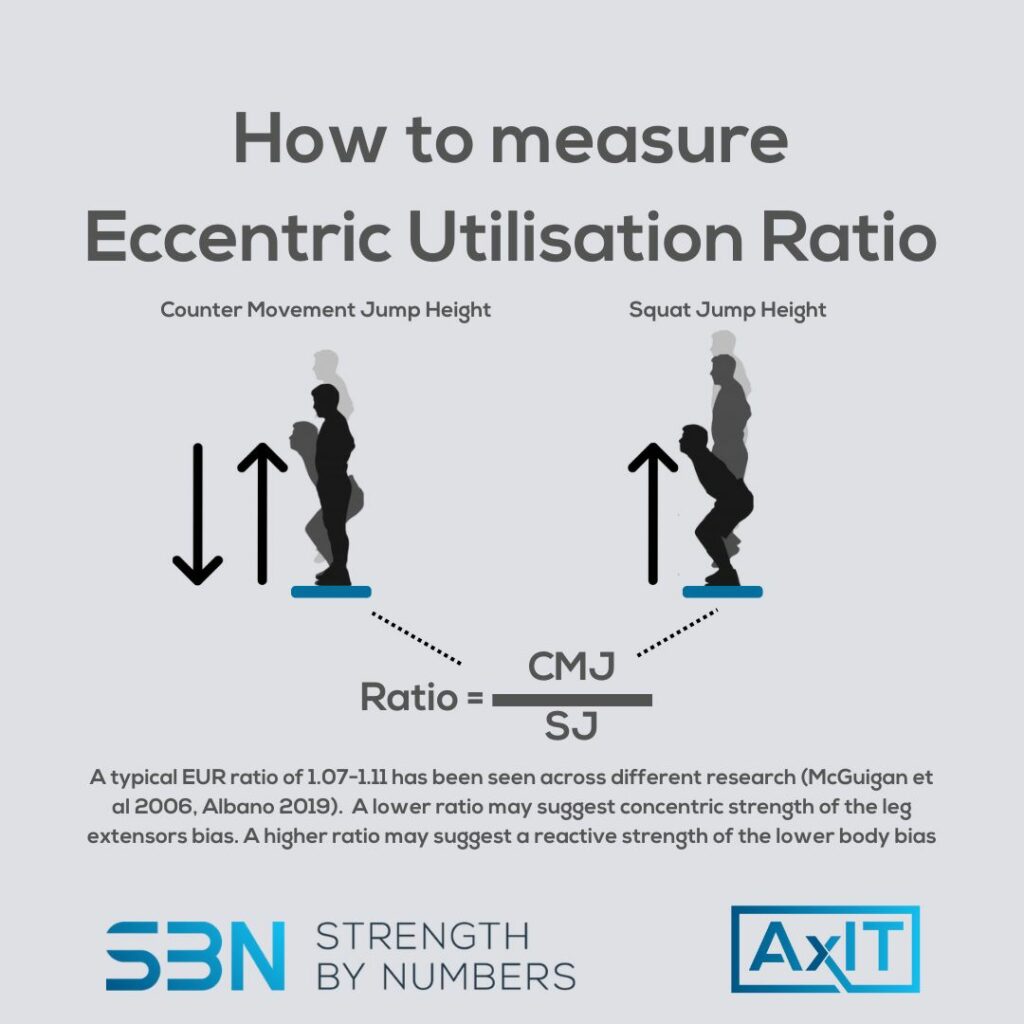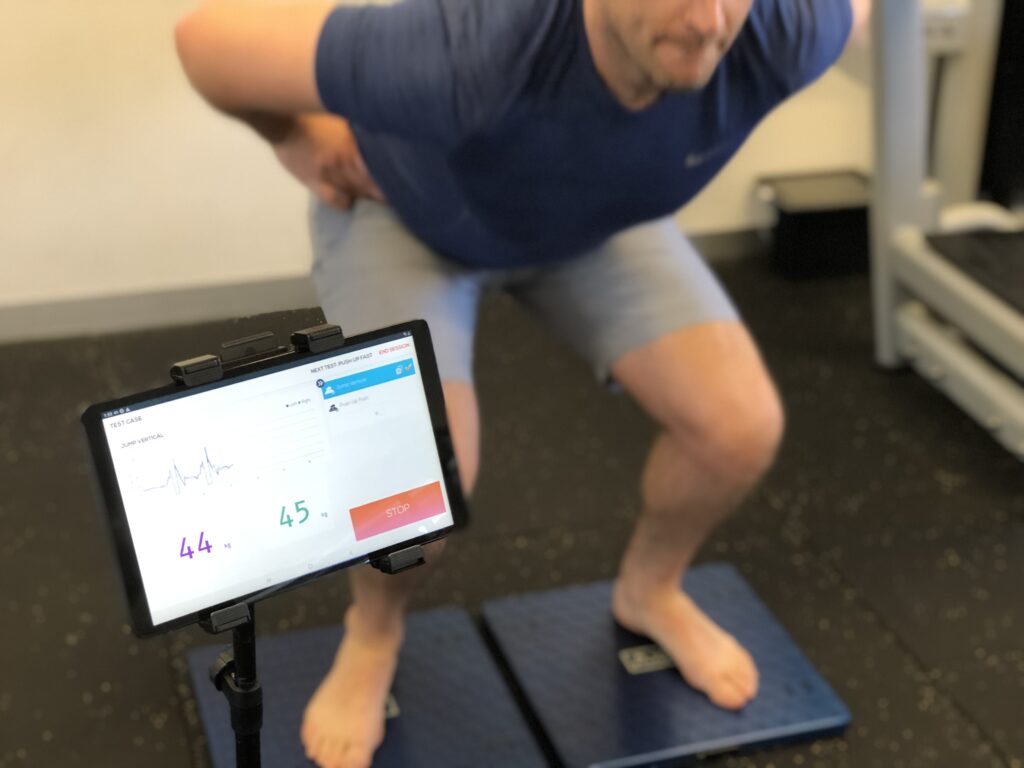Strength and power training are essential for athletes across a wide range of sports. These training modalities support key athletic skills like sprinting, jumping, and change of direction, which are underpinned by lower-body strength and power. For Strength and Conditioning (S&C) coaches, measuring an athlete’s lower-body power through various jump tests like the Countermovement Jump (CMJ) and Squat Jump (SJ) is common practice. However, how should these test results be used to create a comprehensive view of an athlete’s performance and guide program design?
In this article, we explore how combining these tests with the Eccentric Utilization Ratio (EUR) offers a more complete understanding of an athlete’s lower-body power capabilities and provides a framework for individualized training programs.
Countermovement Jump (CMJ)
The CMJ is one of the most widely used tests for assessing lower-body vertical power. Athletes perform a quick dip before launching into a vertical jump, utilizing the stretch-shortening cycle (SSC), where elastic energy is stored and released in the muscles and tendons. The slow SSC, which occurs over a duration of more than 0.25 seconds, is a key component of many athletic movements. The CMJ measures both concentric power and an athlete’s ability to effectively use the SSC to enhance jump performance.

Squat Jump (SJ)
The SJ, in contrast, removes the influence of the SSC by having athletes start in a static, self-selected squat position, holding it for three seconds before jumping. This test isolates concentric force without any stored elastic energy from a prior movement, offering insights into an athlete’s pure concentric strength.

Eccentric Utilization Ratio (EUR)
The EUR is a calculation that compares jump height between the CMJ and SJ, providing a metric for an athlete’s ability to use the SSC effectively. Athletes typically have a EUR greater than 1, indicating that they can jump higher using the SSC in a CMJ compared to a static SJ. A high EUR suggests efficient use of elastic energy, while a low EUR may highlight a deficiency in this area.

The Practical Value of EUR Testing
One of the biggest advantages of EUR testing is its ease of implementation. The CMJ and SJ tests can be completed in a short amount of time and require minimal equipment and footprint, making them an ideal addition to regular performance assessments. Unlike other demanding tests, EUR testing has little impact on an athlete’s training load, allowing coaches to gather valuable data without disrupting ongoing training programs.
For athletes with a high EUR, reactive strength is already well-developed, and further improvements may come from focusing on maximal strength. On the other hand, athletes with a low EUR can benefit from targeted SSC training, such as plyometrics, to enhance their ability to store and release elastic energy.
Conclusion: A More Complete Power Picture
For S&C coaches, assessing lower-body power goes beyond a single test. By combining CMJ, SJ, and EUR results, you can get a well-rounded view of an athlete’s strengths and areas for improvement, helping to tailor individualized training programs that maximize power development. As a coach, this decision-making process becomes critical, especially with elite athletes who require novel and specific training adaptations to continue progressing.
Adding EUR testing to your assessment toolkit could be the key to unlocking greater athletic potential by addressing power output limitations and focusing on the right training methods for each athlete.
Are you ready to take your athletes’ performance to the next level? Explore how AxIT’s smart force plates can help you measure these essential power metrics with precision. Visit www.strengthbynumbers.com for more information.

